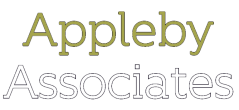It is impossible to not communicate, but it is possible to communicate badly.
For the purposes of clarity, we will use the term “letter” to refer to any form of written communication (letter, email, LinkedIn,.) where you are looking to elicit a response or engage in a 1:1 conversation.
To effectively communicate any message, there are three elements that have to be there and in balance:
- Context: creating the backdrop to prime the reader and frame the rest of the message.
- Credibility: to demonstrate your relevance to the role or opportunity.
- Call to action: letting the reader know what is going to happen next. In some instances this may not be possible, so close with an assumption like “I look forward to speaking with you”.
The purpose of any letter is to open or maintain a line of communication. For responses to advertised positions, the purpose is to get your CV read. For approaches to recruiters and head-hunters, it is to position you as a strong candidate should an opportunity arise. With referrals and targeted direct approaches, the aim is to get the recipient to take your call.
A cover letter is the first opportunity you have to impress, so don’t think of it simply as a formality. As your initial introduction, your cover letter allows you to explain why you are making the approach and gives you the opportunity to show that your skills, experience and achievements mean you are a good match for the vacancy. Think of it as an extension of your CV.
A lot depends on the clarity and quality of your marketing material – and this is where, with our help, you can learn how to repackage yourself.
General guidelines for strong letters
Composition:
• This is often the first contact the recipient has with you, so the impression you give is crucial. Spend time over layout, check carefully for mistakes in spelling and grammar (don’t just rely on spellcheck).
• Keep it short. Its purpose is to open or maintain a line of communication.
• If you’re writing because it’s taking a while to hear back after an interview or promising referral meeting, consider adding a separate summary sheet showing your perception of their need matched to your experience, skills or ideas.
• Use short sentences and words in common usage: you don’t want to make the recipient feel at a disadvantage. Use the active rather than the passive voice (‘delivered £100k in new sales’ rather than ‘£100k in new sales was delivered’).
• Check that your paragraphs don’t all start with the word ‘I’. The letter should be focused on the needs of the recipient and the wording should reflect this.
Destination:
• Always write to a named person wherever possible. If you have used a directory or got their name from the web, check they are still in the same position. Check the spelling, address and title: some PhDs are annoyed not to be called Dr and be particularly wary of names that can refer to either sex.
• If you’ve met more than one person, write a thank you note to them all. You don’t necessarily know where the influence lies, and you don’t want to start off your relationship with the organisation by offending someone.
• Address the recipient by title and surname rather than using their first name unless you know them and are already on first name terms. It is generally safer to err on the side of formality.
Production:
• If you are going to be sending the same letter to several people or are going to use one letter as the basis of the next, make sure that you ‘neutralise’ it first by taking out the names of people and companies or by highlighting them. If you leave in the name of the previous recipient, it will go straight in the bin.
• Send thank you letters within 24 hours. Consider expanding them to indicate a reason for writing, for example you have been thinking further about their needs and wish to suggest some ideas or areas where you could help.
Final Paragraph:
• Have a strong ending and keep the initiative: ‘I’ll call you on…’ rather than ‘I look forward to hearing from you’. You have a greater incentive than the recipient to act and it seldom shows you in the best light to adopt a passive role.
• Use a formal ending: ‘yours sincerely’, since you will be writing to a named person and give your first and last name. If you have a very unusual or hard to pronounce first name, consider giving a shorter version if you are known by one.
For practical advice and support in creating your marketing material, including your LinkedIn Profile contact us to see how we could help.

